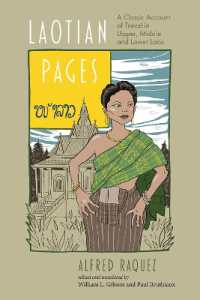Full Description
"Style" has been one of the cornerstones not only of the modern discipline of art history but also of social and cultural history. In this volume, the writers consider the inadequacy of the concept of style as essential to a person, people, place, or period. While the subject matter of this book is specific to religious practices and artifacts from New Mexico between the eighteenth and twentieth centuries, the implications of these investigations are far reaching historically, methodologically, and theoretically.
The essays collected here explore the Catholic instruments of religious devotion produced in New Mexico from around 1760 until the radical transformation of the tradition in the twentieth century. The writers in this volume make three key arguments. First, they make a case for bringing new theoretical perspectives and research strategies to bear on the New Mexican materials and other colonial contexts. Second, they demonstrate that the New Mexican materials provide an excellent case study for rethinking many of the most fundamental questions in art-historical and anthropological study. Third, the authors collectively argue that the New Mexican images had, and still have, importance to diverse audiences and makers.
The distinctiveness of New Mexican santos consists not only in their subjects (which conformed to Catholic Reformation tastes) but also in elements that may appear to have been "merely decorative": graphically striking and frequently elaborate abstract design motifs and landscape references. Despite their anonymity, the images are, as a group, readily distinguished from local products anywhere else in the Spanish colonial world. This distinctiveness suggests that we should inquire not so much about the individual identities of their makers as about the collective identity of the society and place that produced and used them.
Contents
Contents
Acknowledgments
Illustrations
Introduction
1. Problems for Interpretation
Mediating Ethnicity and Culture
The Semiotics of Images
Reception of Sources in New Mexico
Interleaf A: Political Allusions
2. Reconstructing Ethnicity
Formative Era, 1693-1700
Dynamic Ethnicity in Eighteenth Century
Interleaf B: Research and Human Genome
Hybrid Households
3. Christian Icons, Theory and History
The Early Santeros
Interleaf C: The Life of an Artist
Hide Painting: Archival Evidence
Hide Paintings, Sources
Transforming Images
Interleaf D: Sound, Image, Identity
4. Inventing Modern Identities
Competing Religious Discourses
Tradition Reconfigured
Problems of Attribution
Santos in Contemporary Life
Interleaf E: Catholicism and Pueblos
5. Epilogue
Re(f)using Art
Notes
Consolidated Bibliography
Contributors
Photo Credits
Index








